EBR charges a service fee to manufacturers to produce ebike reviews and videos, this began in 2018. It’s the same flat fee for each bike, and it helps us to keep the site going while limiting ad clutter. We appreciate the opportunity to serve you with our opinions and data but respect your right to know that we receive compensation :)
Hey there! This is Brent. Today I’m reviewing the Predator from CIVI BIKES. This is an affordable, entry-level fat tire electric bike priced at $1,399 that can trek through the city but also tackle some moderate off-road trails. It has a 500 watt geared hub motor, a fairly high capacity 624 watt hour battery, mechanical disc brakes in the front and rear, a Shimano Altus derailleur, front suspension with 120mm of travel and of course, big ol’ 4 inch fat tires to float over soggy terrain. While the Predator doesn’t come with, or even offer, fenders or a rear rack option, the frame does have quite a few bosses, so attaching aftermarket accessories shouldn’t be an issues, just be sure to wear a Camelback or something on longer rides as there are no bottle cage bosses. This bike only comes in one frame size, 20 inches, which is going to limit who can ride it comfortably — some extra tall or extra small riders may find it uncomfortable. Thankfully, the top tube does swoop downward to provide a stand over height of 30” and the saddle drops all the way to the bottom with a minimum saddle height of 34 inches, some handy stats for folks like me who have a shorter inseam. The Predator does come in a few different colors though: Matte Black, Pearl White, and Matte Platinum Grey.
At the time of writing, CIVI BIKES is a direct-order only company, though they plan to establish approximately 50 retailers in the United States in the near future. This bike, and the other two models from CIVI BIKES — the Rebel and Cheetah — are also only available to purchase in the United States, Canada and Germany, which will limit who can pick one of these up. Being that CIVI BIKES is currently direct-order only, it’s worth noting some of the pros and cons that go along with this territory, we also did a video on the dangers of buying direct-order recently if you prefer a visual medium. That being said, there is one huge pro that typically comes along with direct-order only companies, and that is the savings in price. I think that can be seen here as well with the Predator, which again retails for $1,399. If this were in a shop, I believe the price would be considerably higher. However, there’s also some potential pitfalls with direct-order only. First, and this one is going to always apply here, direct-order only precludes being able to see and test the bike in person, so there’s really no way to know for sure if a particular bike is going to work for you. I’ve also found that some direct-order only companies can have a communication barrier, making it difficult to get some questions answered. I would say this is only slightly the case with CIVI BIKES, though their English is better than others, and definitely better than my ability to speak foreign languages! Fit and finish can also be an issue with direct-order only. I’ve experienced mismatched components that were either different than what was advertised, or simply did not fit well and were difficult to install. This was not the case with the Predator, which I was able to easily assemble in about 15 minutes. The finish was also excellent with the Predator, with no damage to the components and no scratches to the frame. Hurray!
Driving this bike to a top speed of 20 mph is a Bafang 500 watt geared hub motor in the rear wheel with 80 Newton meters of torque. I’ve tested quite a few Bafang motors now and I appreciate how torquey they are, though sometimes they can be a bit noisy. The top throttle and pedal assist speed of 20 mph seems to be a conscious decision on CIVI BIKES’ part to keep the Predator as a Class 2, which means it can be legally ridden in far more areas compared to a Class 3 or Class 4 electric bike. Even still, it’s always a good idea to check with state and local laws to ensure this bike can be legally ridden on the roads so as to avoid potential legal trouble in the event of an accident. The Predator has an internal 12-magnet cadence sensor to detect crank rotation, which then activates the motor. As with most all cadence sensors, there’s a bit of a delay between the time I start pedaling and the motor starts spitting out power, and also a delay between the time I stop pedaling and the motor shuts off. This is why I generally prefer torque sensors, or advanced sensors, but those components are more expensive and would raise the price of this bike. I’m sure CIVI BIKES had to make some conscious choices to save money to keep the price down, and it looks like the cadence sensor is one of those decisions. Still, since the cadence sensor is internal and secured within an enclosed housing, it should help keep it clear of dust and gunk building up more so than an external cadence sensor, which would be exposed to the elements. One last thing I want to note about the cadence sensor here in regards to the delay with the motor shutting of when I stop pedaling — the way I personally get around that is to lightly depress one of the brake levers to activate the motor inhibitors. I’ve found this is a good way to manually control the motor output and instantly shut it off if I need to, specifically, when I’m navigating obstacles at slow speeds.
Powering the Predator and the compact LCD display unit is a 48 volt, 624 watt hour locking, removable, semi-integrated Lithium-ion battery located on the downtube. The USB Type-A and key hole are located near the top of the battery, well out of the way of the cranks, but the charging port is located on the bottom of the battery and the cable could quite easily get snagged by the cranks while it’s charging on the frame. This could potentially damage the charging port and even the battery itself, which is why it’s a good idea to be extra careful while charging it on the frame, or to simply charge the battery separately from the bike. Batteries like to be stored in a cool, dry location anyway, so the ability to remove the battery is definitely a plus. Also, and this may seem like a small feature but I really appreciate it, the battery can be inserted and locked into place without having to use the key. I estimate the range with this battery to be between 15 to 30 miles, but really it’s quite hard to give an accurate estimation with range as it has so much to do with user specifics and ride style. For instance, folks like me who are a bit heavier and generally use a higher pedal assist setting and the throttle will get much less range out of the Predator than lighter riders who are willing to put in some more good ol’ fashioned human power. Another huge variable here is going to be the PSI in the tires. Since these are fat tires that can be aired down quite low, to around 5 PSI, or up to 20 PSI, it’s really going to matter for range. Lower PSI is going to be great for getting through mud, snow, sand and the likes, but not so good for extending range. The display on the Predator is fixed and can’t be rotated to avoid glare without tools, though I didn’t have an issue seeing this display in direct sunlight. The fact that it’s fixed also means it can’t be quickly removed when I leave this bike at a public bike rack, leaving it vulnerable to being scratched by other bikes. The display itself is pretty compact and quite simple, which is not to say that is a bad thing. In fact, I rather appreciate this display for those very reasons. The charger for the Predator is a standard 2 amp output charger.
A long press of the M button on the display will power the bike up and after a quick bootup and a CIVI BIKES logo display on the screen it’s ready to ride. Something I love about this setup here is that the throttle is hot as soon as the bike is turned on. Having the throttle live at 0 mph is great for quickly getting going without having to wait for the cadence sensing pedal assist to detect movement in the cranks. I use this primarily for starting on a hill, getting across a cross walk and also assisting the bike up stairs, which makes a huge difference. One warning I like to give here though, based on my experience, is that a live throttle means an accidental activation can have the bike run away on its own. So please be careful and don’t get hurt! There’s no USB Type A port on the display, so powering an aftermarket light this way or charging a cell phone is an option here, but that could still be possible by using the USB Type A port on the battery, if you choose to do this just be mindful of the cord so it doesn’t get caught up with your legs while pedaling… again speaking from experience here haha. Since there aren’t any stock lights on the Predator, out of the box visibility is pretty low, especially with the matte black frame. For folks who, like me, enjoy sunset and evening rides, it’s a good idea to consider aftermarket lighting. I’ve been using the Lumos helmet lately for my evening rides just because it’s easy to put on and activate, but still provides a bit more visibility. There’s quite a few helmets out now though that have this same functionality, so look around and just find one that suits your needs! The lack of stock lights on this bike also makes me feel like this is more geared towards trails than riding through the city, even though it does have rear rack bosses. And again, with some aftermarket lights it could be find in the city too. I’m just always concerned with safety and being clearly seen.
Overall, the Predator feels like a good value buy for an entry-level fat tire electric bike. It comes with pretty much all the essentials and even has front suspension to help soak up some of the bumps, but there are definitely some concession to be had. Namely, the single frame size and high step design is limiting. It’s nice that the company has opted for an angled top tube design to make it more approachable, and I appreciate the three color choices. The lack of lighting, fenders, bottle cage bosses and rear rack also limits the functionality a bit… but at least they have some mounting points for a disc brake compatible rear rack (just make sure it’s wide enough to work with fat bike tires). CIVI BIKES did upgrade the derailleur from the entry level Tourney to the Altus, but the rims aren’t punched out which adds weight and there’s no steel derailleur cage to help protect it from damage. You might be able to mount one of those aftermarket without spending much money. Assembling this bike was far easier than some of the others I put together, and from the time I opened the box to the time I was able to ride was only about 15 minutes. Not bad at all. Everything fit together perfectly. If you’re looking for an entry-level fat tire electric bike that can zip through the city but also tackle some moderate off-road trails, specifically if you’re looking to go through mud, snow, sand or other soggy terrain, the Predator seems like a good fit. I want to thank CIVI BIKES for partnering with me on this review and if you have any questions, please feel free to leave them here in the comments or on YouTube and Court and I will try our best to answer them. You can also check out the CIVI BIKES forums to share photos and make some friends. Have a great day and ride safe!
Pros:
- The throttle is live from 0 mph, making it easy to get started at the bottom of a hill, gettin across a cross walk or assisting the bike up stairs
- CIVI BIKES opted for a compact sealed cadence sensor that won’t get dirty or bumped out of place as easily as older sensors that are still used on other value priced ebikes
- Motor inhibitors instantly cut power to the motor, ensuring the shortest possible stopping distance and allowing manual control over the motor output when navigating technical terrain at slow speeds
- Cable management is pretty clean with a large portion of the wires being internally routed through the frame, which helps protect the wires from getting snagged and tugged loose or damaged and also keeps the bike looking sleek
- Display is incredibly simple to use and easy to see in direct sunlight, small size also helps keep the handlebars looking clean and uncluttered
- Spring suspension with 120mm of travel does an adequate job of soaking up small bumps and overall just smoothing out the ride, preload adjust and lockout also allows for some fine tuning depending on rider weight and ride style, terrain being tackled, etc., a mounting hole on the arch allows for an aftermarket light and/or fender to be attached
- Fat tires have huge air volume which helps to smooth out the ride even more, wide tire patch gives tons of traction for soggy terrain and allows the bike to float over terrain that normal tires would sink into, lower the tire pressure to ride across sand or snow
- 180mm mechanical disk brakes offer ample stopping power, four-finger brake levers with rubberized edge have and grippy surface area for a secure and more comfortable grip when braking
- Downtube mounted battery is semi-integrated and locking, it can be removed quickly and reinserted without having to use the key, USB Type A port allows for accessories to be charged on the go or for the battery to be used as a portable power bank, key hole and USB Type A port are located on the top of the battery and are well clear of the cranks, 624 watt hour capacity is a bit larger than average which helps move the weight of this bike
- Double-sided plastic chainring guard helps protect the chainring from damage in the event of a strike and also helps keep the chain locked in place, reducing the chance it will pop off towards the inside or outside
- Selle Royale Nebula saddle is comfy thanks to the gel, quick release seat post clamp allows the saddle heigh to be quickly adjusted on the fly without the need for tools
- Adjustable length kickstand is placed at the rear of the bike and out of the way of the cranks, so there’s no pedal lock when rolling the bike forwards or backwards, this is especially handy for pulling the bike out a tight spot like a storage unit or garage
- 500 watt motor delivers up to 80 Newton meters of torque which means ample power for starting and reaching up to 20 mph, rear hub motor combined with the downtube mounted battery makes for a pretty well balanced bike and the motor won’t interfere with shifting at all and can even drive if the chain drops or breaks
- Shimano Altus derailleur is a small upgrade from the entry level Shimano Tourney seen on many competing products
- Price is relatively affordable at $1,399, especially given the 1 year comprehensive warranty and some of the features like suspension, 13 ah battery and upgraded derailleur
- Compared to some of the other ebikes I’ve covered, this one was mostly assembled and didn’t require a lot of effort… partially because there were no extra accessories like fenders, rack, or lights to mess around with
- The price on this ebike is very good, it’s one of the most affordable electric fat bikes around with free shipping, a high capacity battery, and a one year warranty
Cons:
- Grips are non locking and stitching feels like it could wear over time
- Shimano SIS Index trigger shifter might be difficult to reach for some riders with smaller hands, also an entry level component, they work well for big fingers and if you’re wearing gloves
- Brake levers are non adjustable for reach and mechanical brakes generally have less stopping power than hydraulic brakes
- Display can’t be swiveled or removed without tools, making angling for glare an issue and also leaving it vulnerable to being scratched when left at a public bike rack, simple display does not provide a ton of information but it’s nice that you can enter into the settings area and make adjustments
- Fenders, lights and racks are not included with the bike, though there are bosses for aftermarket accessories to be mounted, except for a bottle cage, consider an anywhere adapter for this
- Rims are not punched out, which can be done on fat tire bikes to save weight
- Only one frame size here, and it’s a high-step design, so petite riders might not be able to fit, but at least it comes in three colors and ships to multiple countries
- Charging port on the battery is located on the bottom of the battery, leaving the cable susceptible to being snagged by the cranks which can damage the cord or even the battery
- Cadence sensor has a delay from the time pedaling starts and stops and the motor activates and deactivates, this can be particularly troublesome when trying to navigate obstacles at slower speeds vs. a torque or multi sensor
- No derailleur guard leaves the derailleur vulnerable to strikes, it also leaves the power cable vulnerable to snags or damage as well
- Plastic double-sided chainring guard can get destroyed in the even of the strike and doesn’t do much in the way of protecting of the chainring itself from getting damaged
- Spokes in the rear wheel are the same gauge as the spokes in the front wheel, so no added structural integrity is added like with some higher end fat tire bikes with the hub motors in the rear wheel and these are thinner 14g vs. 13 or 12 gauge
- Direct-order only means there’s no way to test out and ride this bike before purchasing, and it also comes with its own inherent risks like potential communication issues and potential fit and finish issues, as well as the requirement that the customer assemble the bike themselves
Resources:
- Official Site: https://www.revibikes.com/products/predator
- More Pictures: https://photos.app.goo.gl/emrixNaXNQcrdoFo7

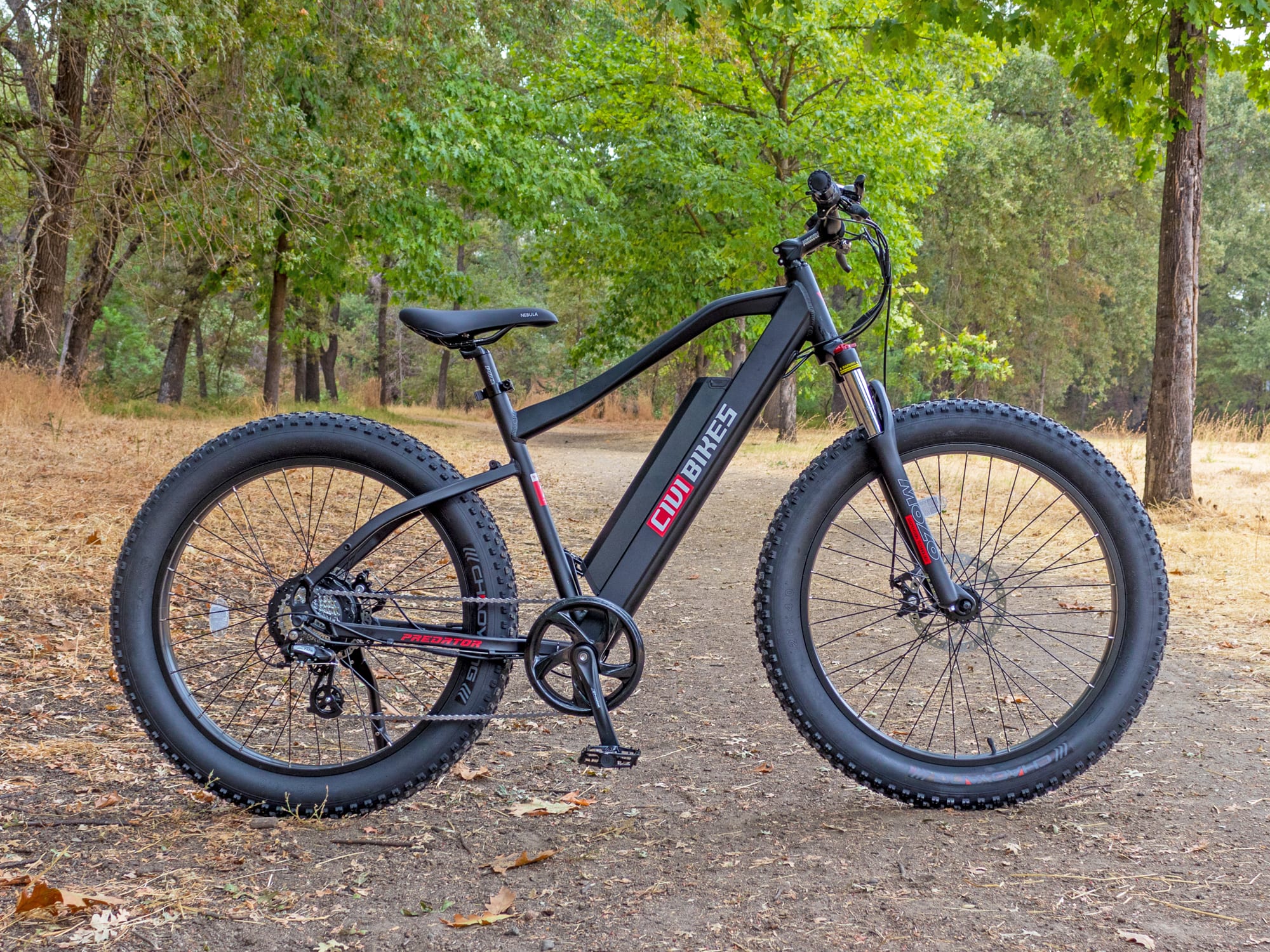

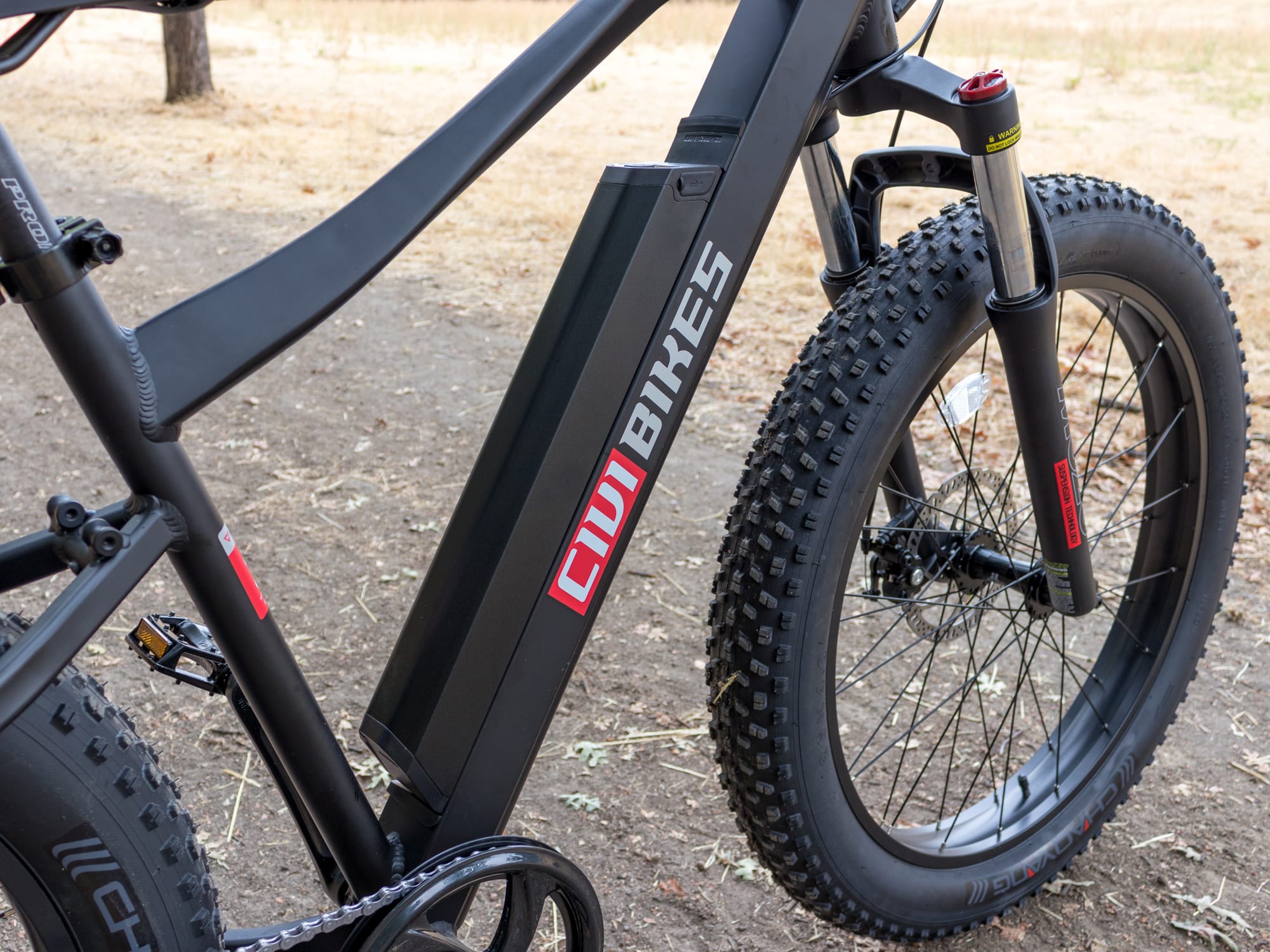
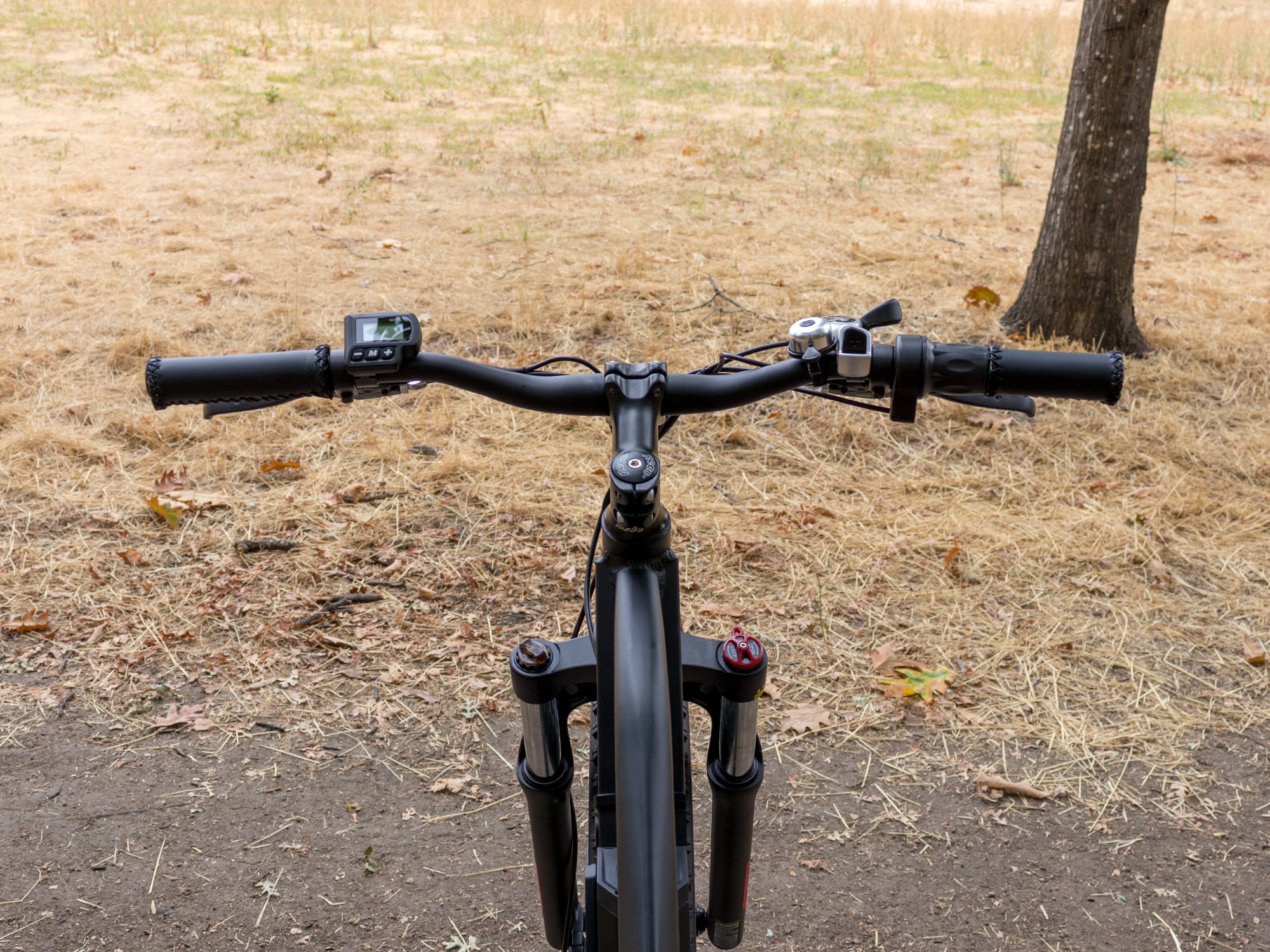
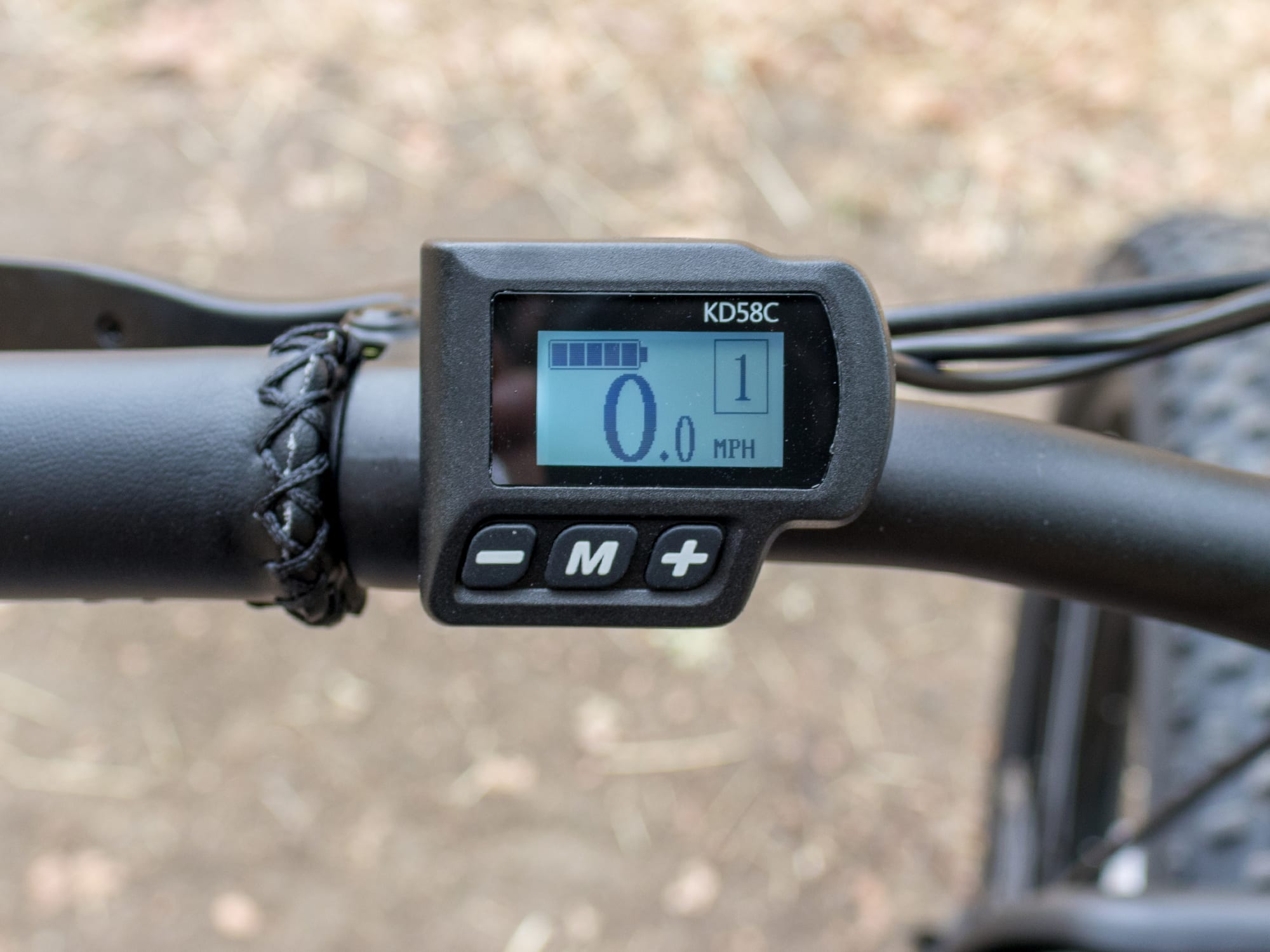
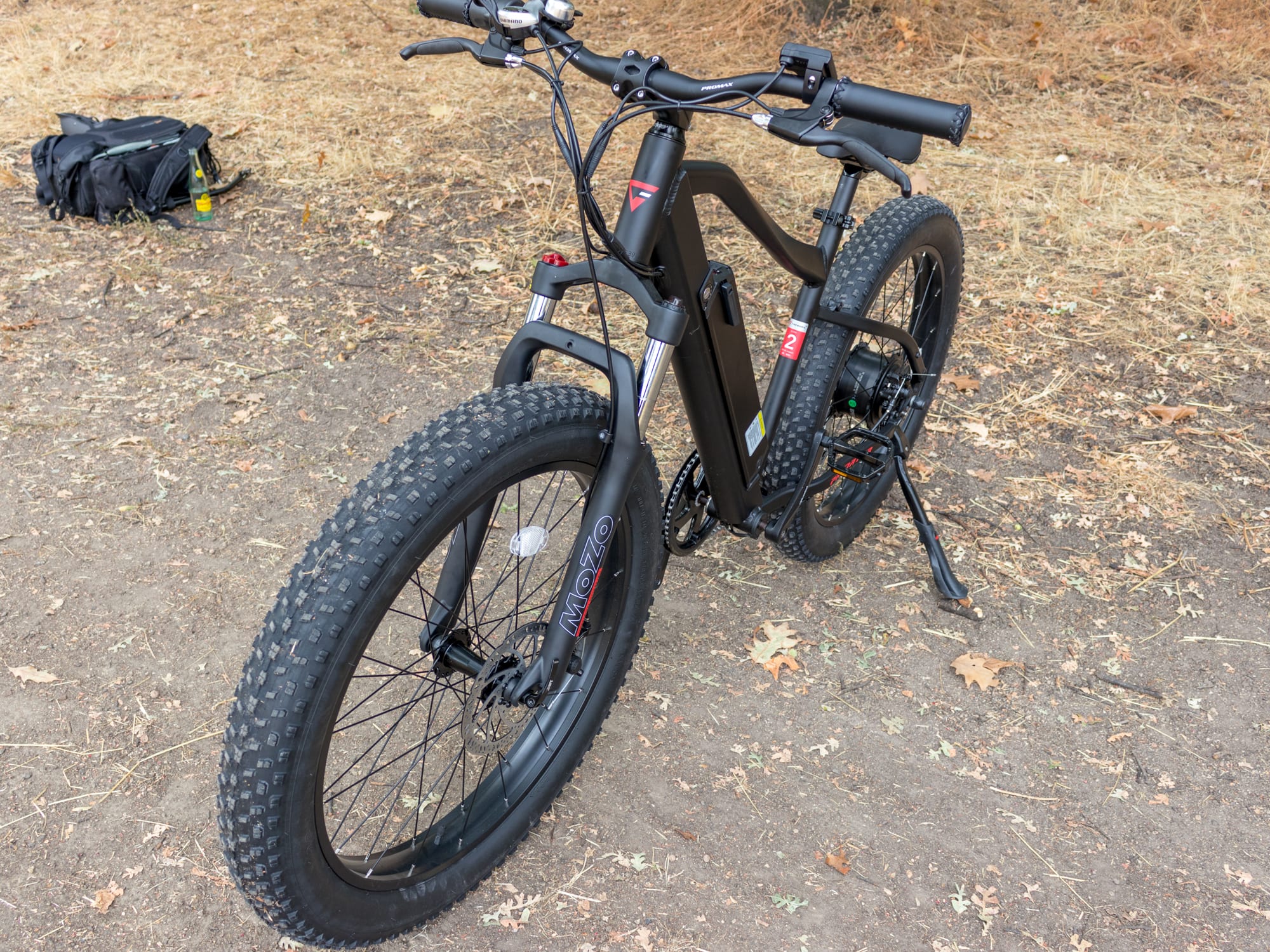
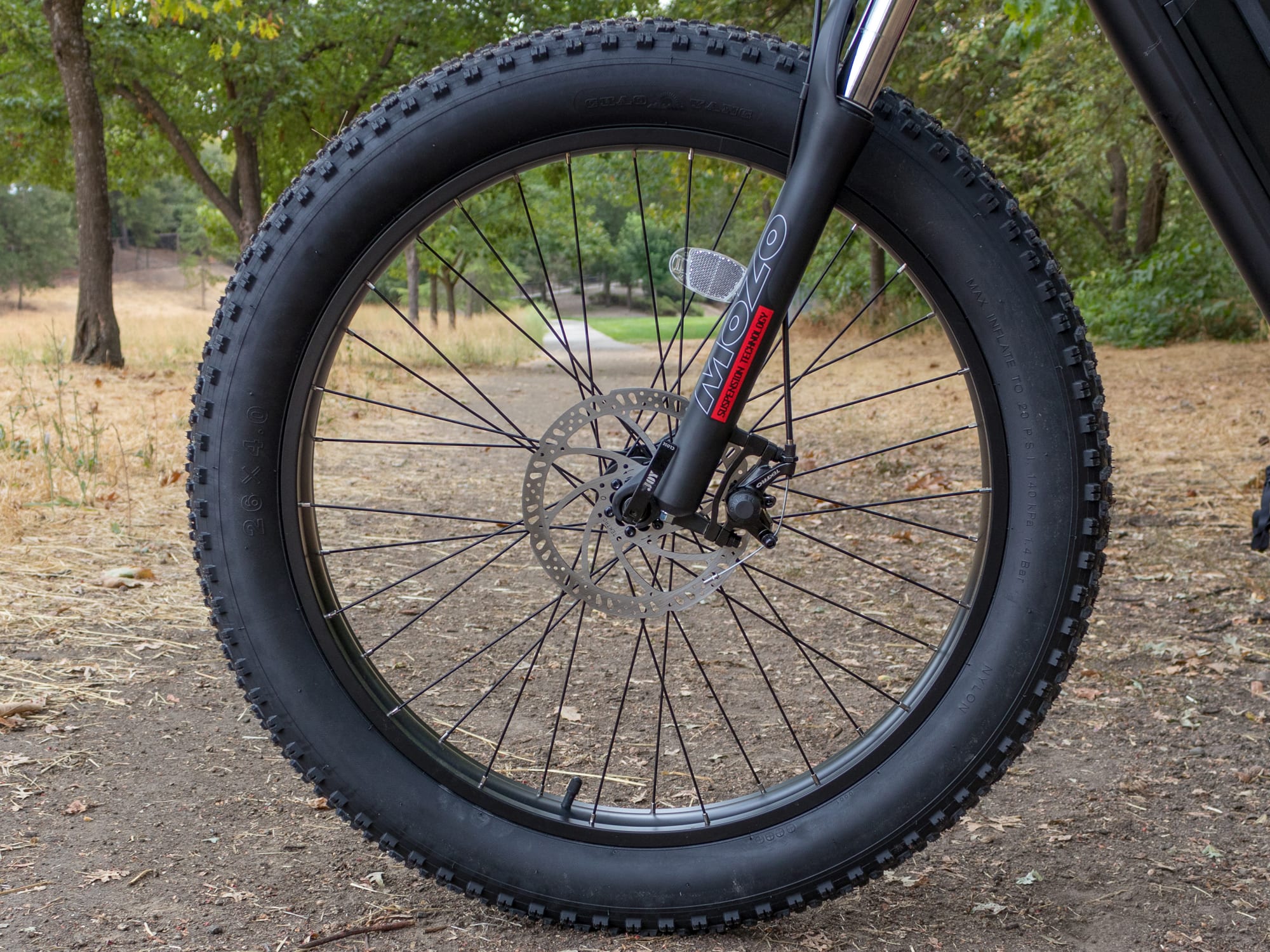

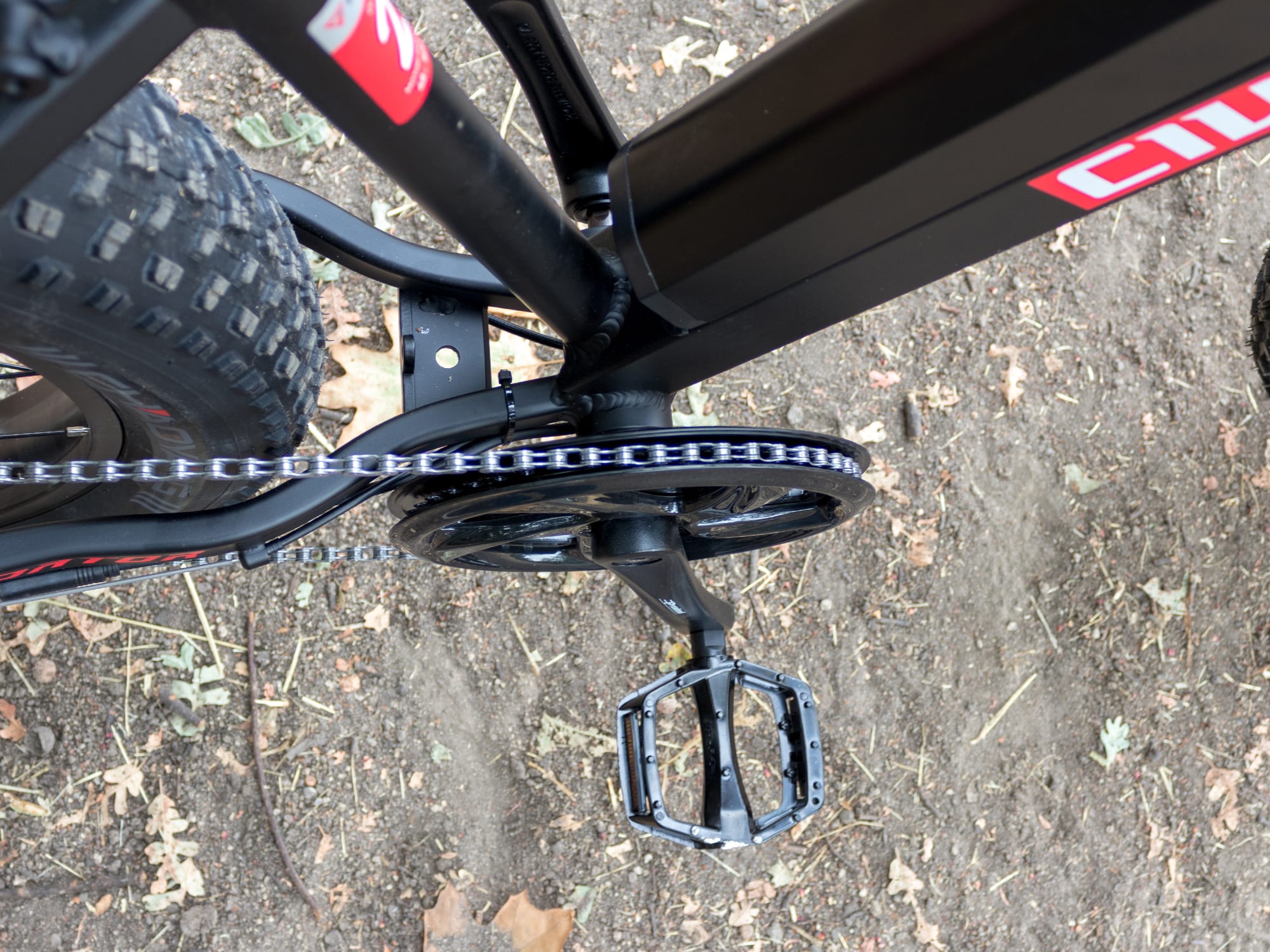
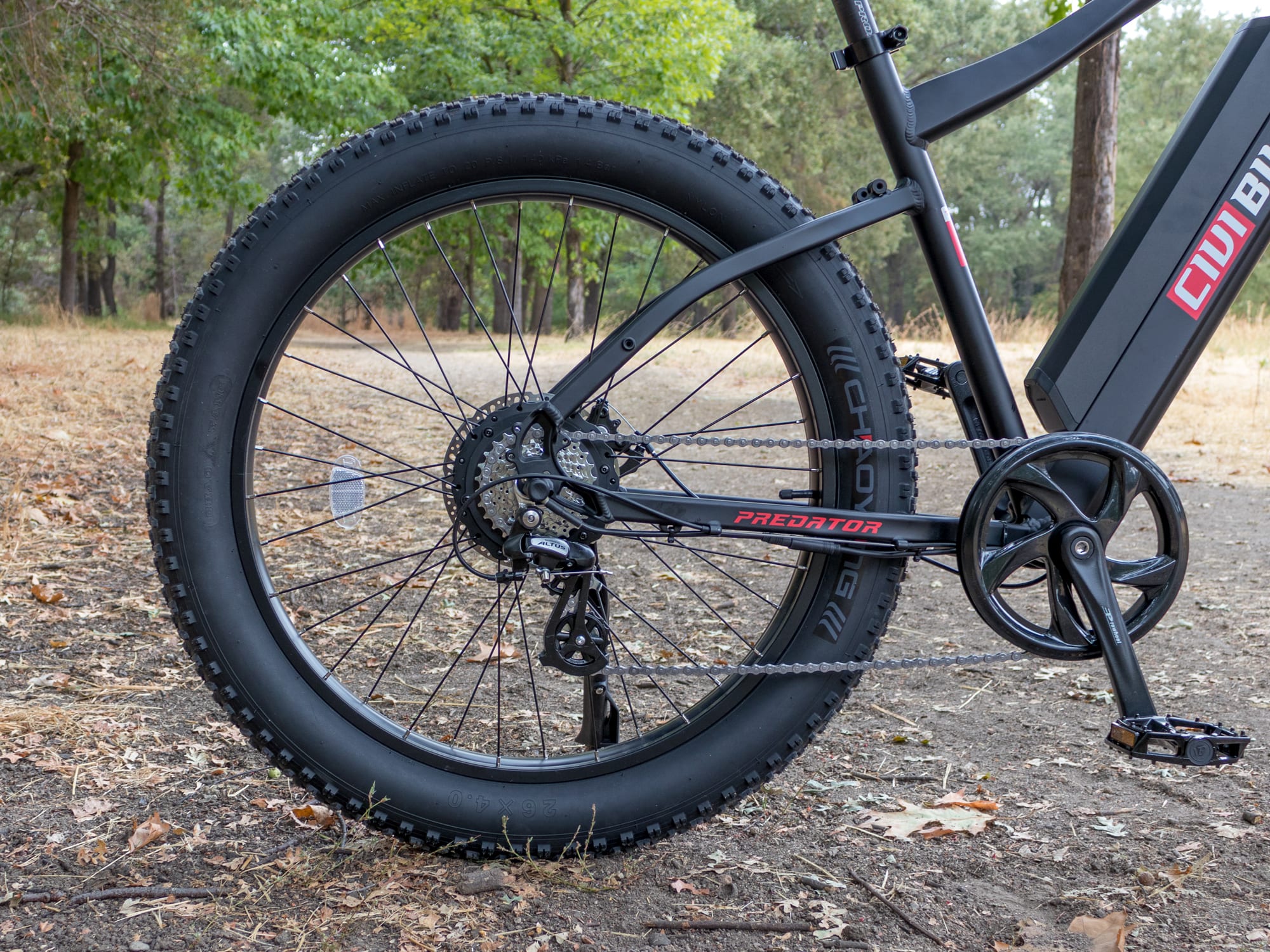

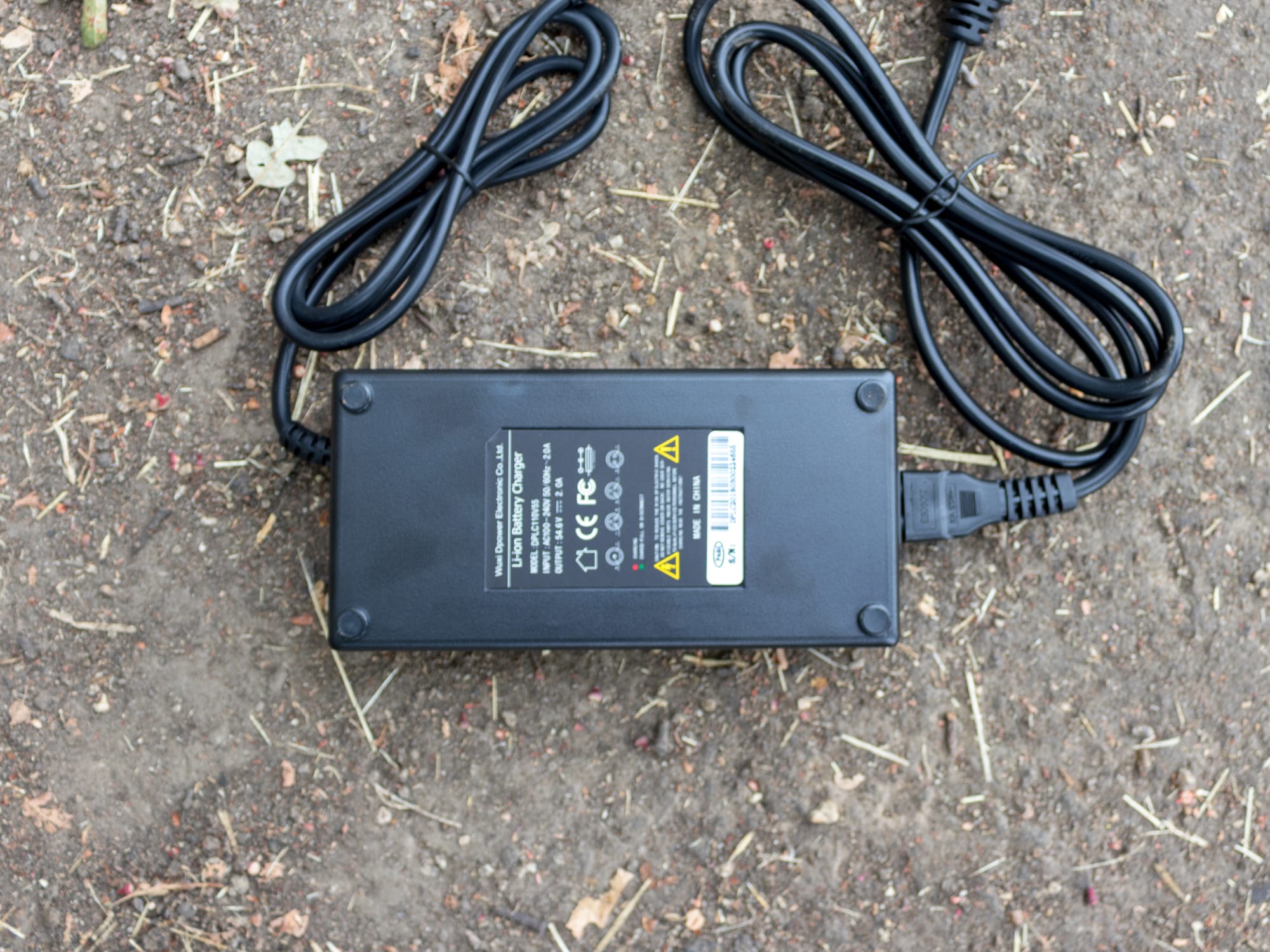



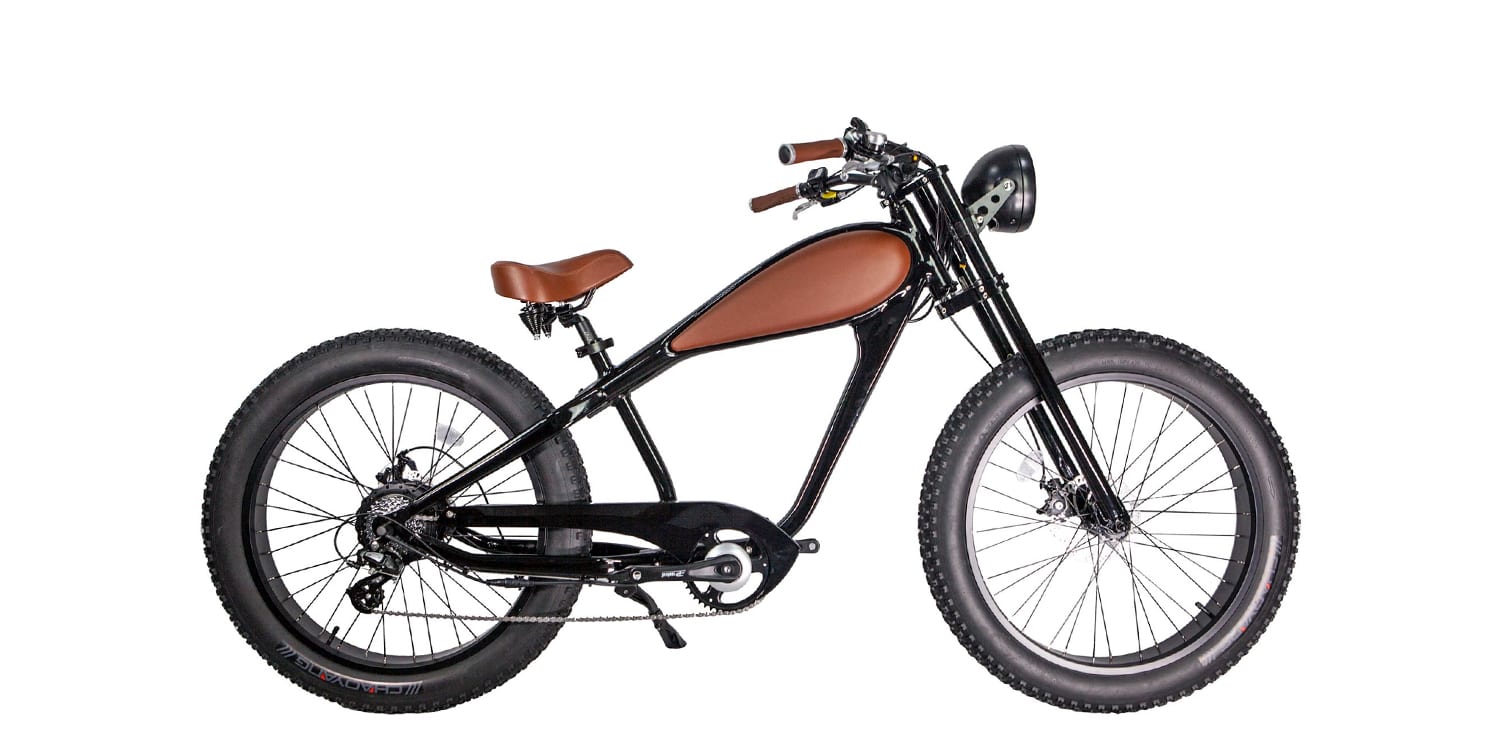
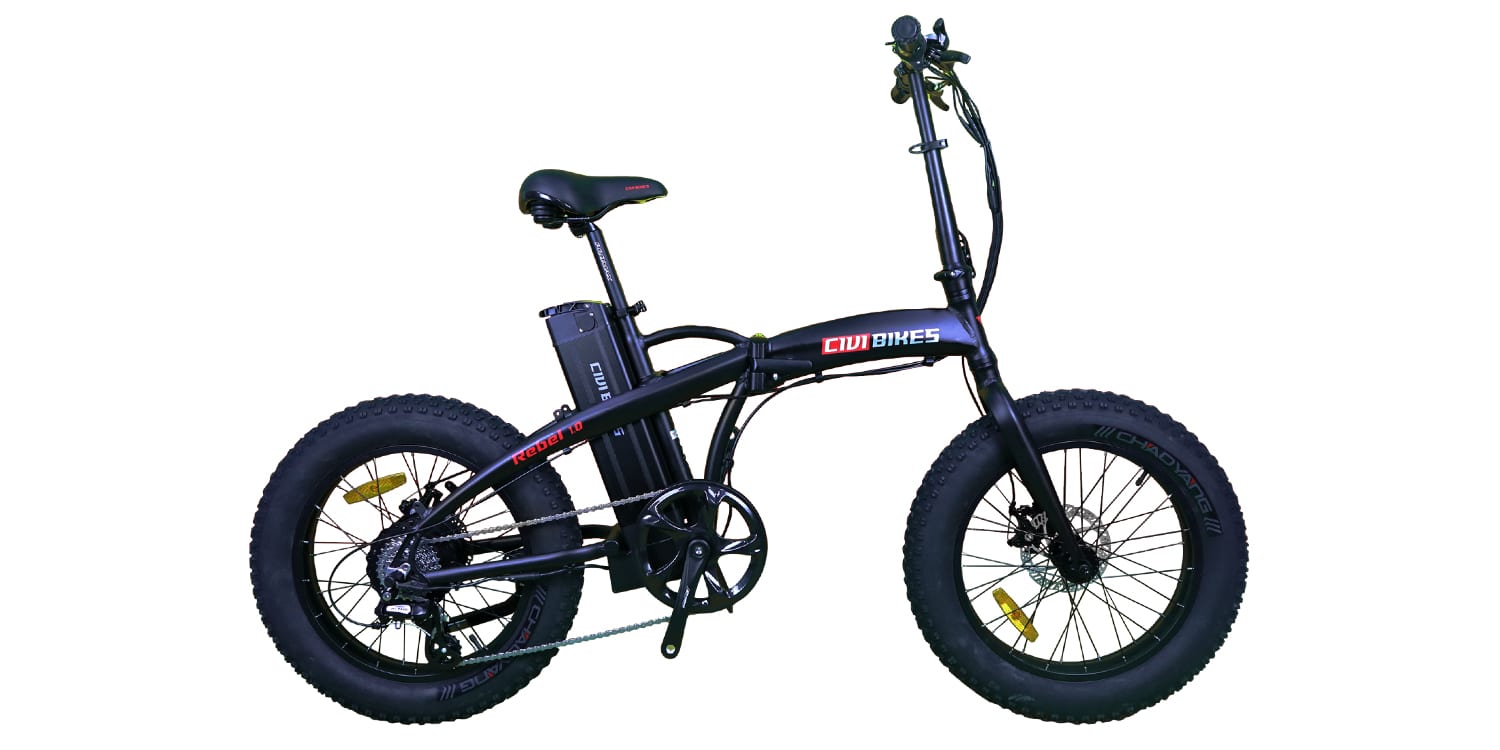

Jazz says
Looks like a decent entry level offering and very similar to Rad, Volt, Biktrix, M2S and other offerings.
Court says
Yeah, I got to meet these guys at Interbike and they were very friendly. I’m excited to review their Cheetah model at some point too :)
Mike says
Rode this and compared to the Rad Rover, a lot stronger motor, and not as cramped feel from handlebars to seat post. The 80 nm torque level definitely shows, and they are allowing it to go to 25 mph as standard now on current models in mid 2019. Great buy and they are being found at a number of dealers across the country. Getting at a dealer ensures labor is covered, whereas buying direct does only include parts coverage. The MOZO shocks are very sweet. I actually like the small display, since it is out of the way, less prone to be stolen, and really you pay more attention to the road in front of you.
Court says
Great feedback and insights here, Mike! Thanks for taking some time to post about the CIVI BIKES Predator :)